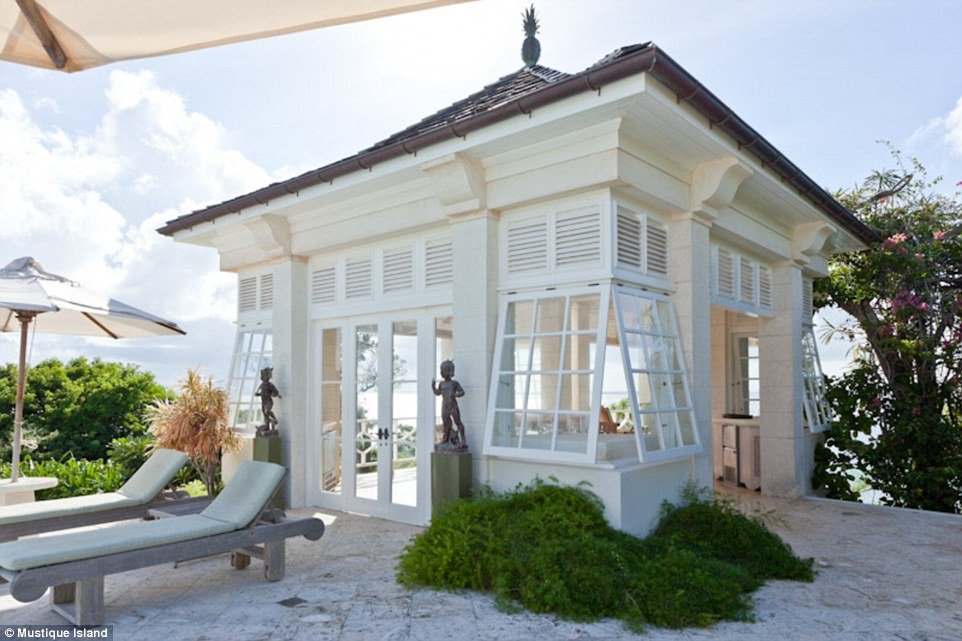#10434. Tropical white classical pavilion facade with panoramic glazing

This elegant pavilion exemplifies colonial architecture with tropical motifs. The pristine white facade boasts impeccable symmetry and thoughtful proportions. Particularly noteworthy is the high hipped roof with its characteristic decorative pineapple finial—a classic symbol of hospitality in colonial architecture.
The pavilion's facade is rich with architectural details: wide projecting cornices create deep shadows that protect from the tropical sun, while a well-designed system of louvered shutters ensures natural ventilation in the hot climate. Bay windows with multiple muntins add visual volume to the building and provide panoramic views, likely of a seascape.
The symmetrical arrangement of fully glazed French doors strengthens the connection between interior and exterior spaces, making the boundary between them virtually imperceptible. Small decorative sculptures flanking the entrance add sophistication to the composition, balancing the space.
For residential facade design, several techniques can be borrowed: using a light monochromatic palette to visually increase volume, incorporating functional architectural elements (louvers, wide cornices) for climate comfort, and adding symmetrical decorative features to create a harmonious composition. The integration of natural surroundings, as seen in the image with the surrounding vegetation, is also an important principle that allows the structure to blend organically into the landscape.